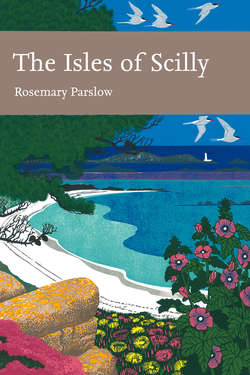Читать книгу The Isles of Scilly - Rosemary Parslow - Страница 24
Glaciation
ОглавлениеAlthough it was long thought that glaciation had missed Scilly, there is evidence that a tongue of ice from the southern edge of the Late Devensian ice sheet, the Irish Sea Ice Stream, probably reached the northern islands of Scilly 18,000 years BP (before present), eventually leaving deposits on White Island off St Martin’s, and on Northwethel (Scourse et al., 1990). The evidence for this lies in a great variety of rocks exotic to Scilly such as flint, sandstone and associated ‘erratics’. The best example of glacial till in the islands is within the Bread and Cheese
FIG 10. The bar to White Island is a former glacial feature, probably a glacial moraine. June 2002. (Rosemary Parslow)
formation at Bread and Cheese Cove SSSI on the north coast of St Martin’s: the overlying gravels, the Tregarthen and the Hell Bay gravels, are interpreted as glaciofluvial and solifluction deposits respectively. There are erratic assemblages with both deposits (Selwood et al., 1998). Recent work suggests that some of these deposits, such as that at Bread and Cheese Cove, may not be in their original positions (Hiemstra et al., 2005). Other sites with glacial links occur in the bars in the north of the islands, such as the ones at Pernagie, the one connecting White Island to St Martin’s (Fig. 10), and Golden Bar, St Helen’s: these are probably glacial moraines, not marine features (Scourse, 2005).
